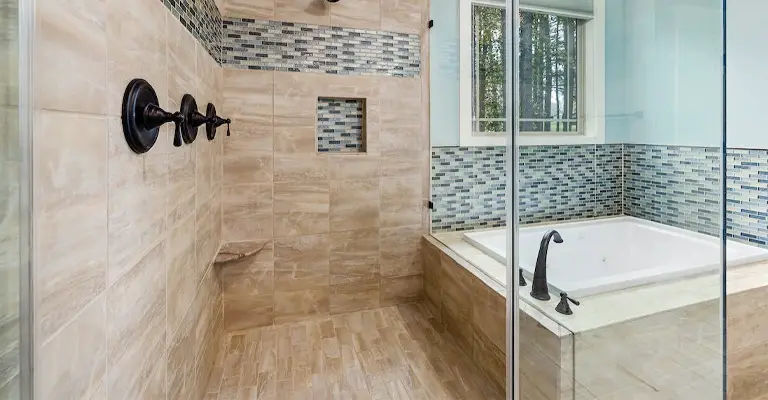Mold growth in your home can be unsightly and potentially harmful to your health, so it’s important to address it as soon as possible. If you’ve noticed mold behind your shower tiles, you might wonder how to get rid of them.
This blog post will provide step-by-step instructions for removing mold from behind shower tiles and tips for preventing it from returning.
I’ll also discuss what to do if the mold problem is more extensive and requires professional intervention. If you’re ready to tackle this common household issue, read on for our expert guidance.
To remove mold behind shower tiles, you will need to follow these steps:
- Begin by turning off the power to the shower, either by unplugging the cord from the outlet or by switching off the circuit breaker that controls the shower’s electrical circuit.
- This is important for your safety as you will be working with water and electricity. Remove any shower curtains, liners, or other materials that might be covering the tiles.
- Use a flashlight to inspect the area behind the tiles and identify the extent of the mold growth.
- Put on protective gear, including gloves, goggles, and a mask, to protect yourself from any mold spores that may be released during the cleaning process.
- Use a solution of water and mild detergent to scrub the affected tiles and grout lines. You can also use a mixture of water and vinegar or a commercial mold-removal product if you prefer.
- Rinse the tiles and grout lines thoroughly with water to remove any remaining mold and cleaning solution.
- Use a fan or open a window to help the area dry completely.
If the mold has not been completely removed or appears to be growing back quickly, you may need to remove and replace the affected tiles.
This is a more involved process and may require the assistance of a professional. It’s important to address mold growth as soon as possible, as it can cause damage to your home and may pose a health hazard.
If you are unable to remove the mold on your own, or if you suspect that the mold problem is extensive, it may be necessary to hire a professional mold remediation service.
How to Prevent Bathroom Mold?
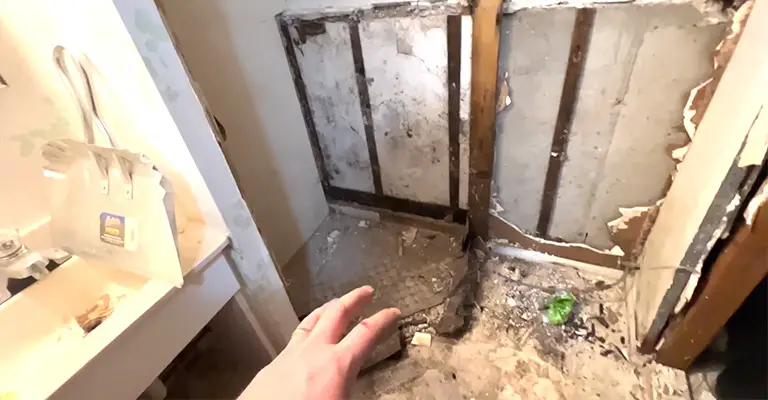
Regardless of the type of mold, they all require constant moisture to survive. Therefore, bathrooms are a favorable environment for them.
There is always something wet between the sink and the bathtub or shower-but you can prevent mold from growing by taking preventative measures.
Keeping moisture under control is key to preventing mold. Check that your bathroom faucets and valves don’t leak and that your drains aren’t clogged.
A bathroom with water that drips continuously, or pools is the perfect breeding ground for mold. If there is a leak in the plumbing or walls, fix it immediately. It’s important not to let water sit around for too long.
1. Choose the Best Paint for Bathrooms
If you’re painting bathroom walls, choose a semi-gloss finish that makes them water-resistant.
Applying mold inhibitors to the paint before it is applied or using a paint formulated with mold-inhibiting antimicrobial agents could be a good idea.
2. Make Sure There Are No Cracks In The Tile And No Wet Drywall
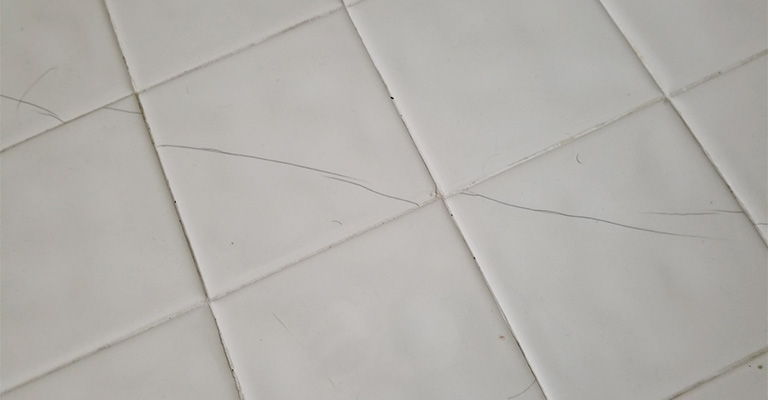
It is important to take care of cracked tiles and chipped grout right away to prevent water from seeping through to the drywall or subfloor behind them.
It’s particularly difficult to eliminate mold growing behind bathroom tiles because wet drywall and wood are very susceptible to mold growth.
3. Bath Mats, Shower Curtains, And Dry Towels
Soft materials such as towels, bathmats, and shower curtains are the perfect breeding ground for mold in the bathroom. Make sure they are dried properly after each use and wash them regularly.
4. Make Sure Your Bathroom Is Well Ventilated
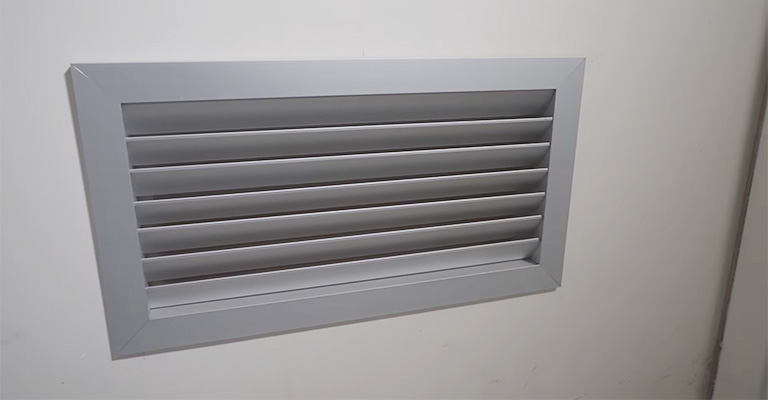
When you use the shower or tub, water droplets accumulate on the tile walls, and it may take a while for them to dissipate, particularly if the bathroom is not properly ventilated.
Remove all water from the shower stall or bathtub with a squeegee after each use. You should ensure that the air in your bathroom flows freely. To dehumidify your room, install an exhaust fan if you don’t already have one.
It’s important to choose a bathroom fan that moves air at a rate appropriate for the size of your room, measured in cubic feet per minute (cfm). Otherwise, it will be ineffective.
How Do You Tell If There’s Mold Behind Shower Tiles?
It’s unlikely that most homeowners will ever see the wall behind the bathtub or shower. As a result, what is happening in the bathroom is somewhat mysterious. Can we ensure that no mold or mildew is growing behind the scenes?
You may notice a black spot here and there and wonder if mold is to blame. Listed below are some signs of mold that should be taken seriously to avoid major health complications.
1. You Have A Problem With Your Bathroom’s Drying
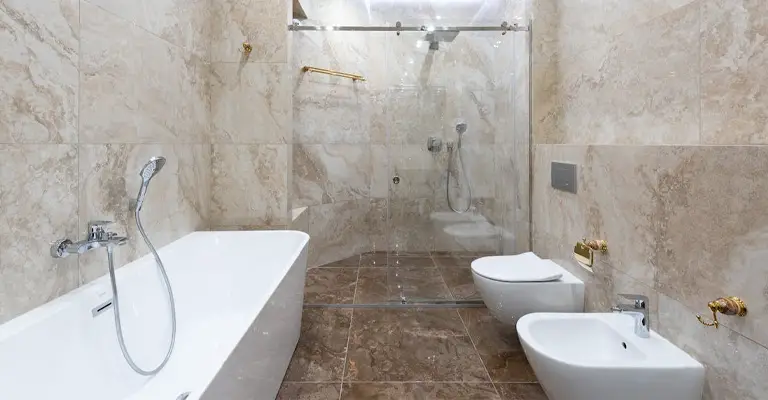
The presence of water is one of the most significant indicators of mold or mildew. Drain the water from the tub after you are done bathing is generally a good idea. There are some situations in which water does not drain.
It may work its way into the grout around the bathtub or even behind shower tiles depending on where it soaks in. The growth of mold or mildew can be caused by water seepage.
2. The Floor Feels Soft And Spongy
When your bathroom is damaged, you may feel the floor is soft under your feet. Depending on the extent of the damage, you may even feel like you are stepping on a sponge.
This indicates that the flooring materials have rotted due to mold and other environmental factors.
3. There Is A Musty Smell In Your Bathroom
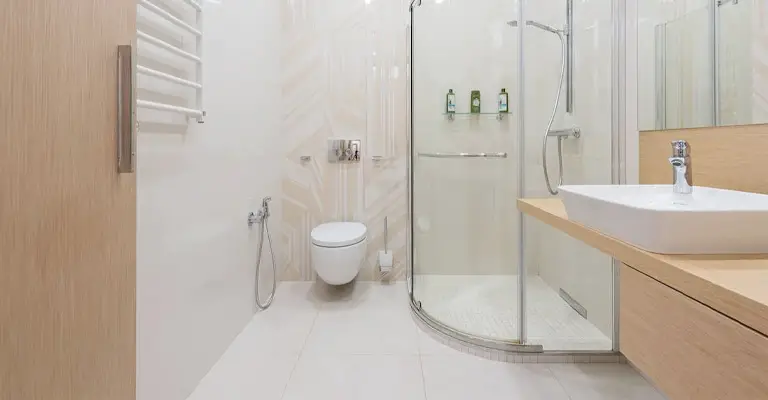
When you go to shower in the bathroom, take a sniff. The room may smell old and musty due to mold growth.
You can smell mold spores in your house because decomposing materials are decomposing. Rotting wood can smell particularly pungent when it is covered in mold.
4. You See Dark Spots
It is common for black spots to appear in the bathroom as the first sign of mold or mildew. These black spots will likely appear in the grout around the tile or the caulk around the bathtub or shower.
To spot spores in tricky areas, look under the floor, around the baseboards, and on the ceiling.
5. It’s Dark And Damp In Your Bathroom
As a result of their dark and damp environment, bathrooms are perfect for mold growth.
Mildew and mold thrive in such environments, even reaching the ceiling and the grout underneath. Bathrooms without much natural light are a potential source of problems.
6. Circulation In Your Bathroom Is Lacking
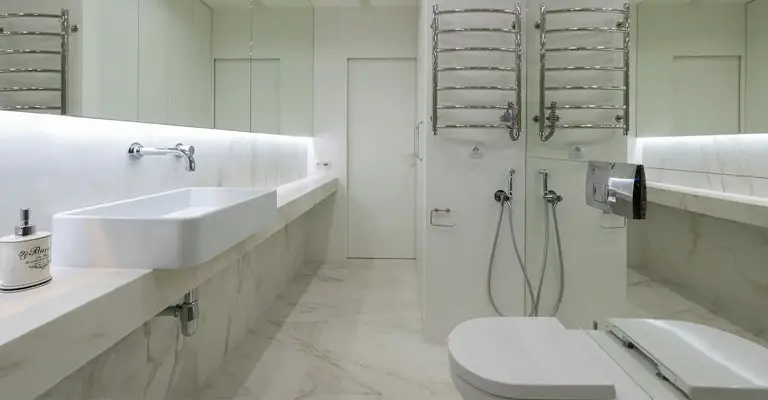
A bathroom without windows or fans is especially prone to mold growth. It is easier for mold or mildew to grow in stagnant air, especially after a shower when damp air settles on surfaces.
It is possible to prevent spores from making their homes in your bathroom by opening a window or turning on an exhaust fan.
7. Allergies?
There are many times when people think that they have constant allergies at home when in reality, they are suffering from mold exposure.
Symptoms of allergies can affect people of all ages and pets. A runny nose, itchy eyes, fatigue, dizziness, and headaches are some of the symptoms of this illness. It could be the bathroom that is to blame.
How Dangerous Is Black Mold in Your House?
It is possible to find mold in a variety of colors and types. There are several types of black mold, but Stachybotrys is regarded as one of the most toxic.
You should remove mold from the house immediately, regardless of the kind. All molds present health risks and should be removed.
You may find mold in the grout around the tile, around drains, or on walls or wallpaper in the bathroom. The tips you’ll learn in this article will help you treat mold-affected areas and prevent them from growing in the future.
To remove black mold from hard surfaces, follow these steps:
- To treat an affected area, mix bleach with water in a spray bottle and spray it on.
- Take it out of the refrigerator and let it sit for 10 minutes.
- The mold will likely fade on its own over time.
- However, if the mold is stubborn, you can scrub it away with a coarse brush (for larger areas) or an old toothbrush (for smaller areas).
- After cleaning the surface, rinse it with water thoroughly.
An excellent natural alternative to bleach is white vinegar or baking soda, which kills black mold without using bleach. The same principles apply to vinegar as they do to bleach.
Final Words
You may experience serious health issues and structural problems due to mold and mildew in your home. The time may have come for you to replace the tub or shower in your bathroom if you have noticed mold growth.
Whether the tiles appear askew or move when you touch them, mold may grow on the drywall or subfloor behind bathroom tiles. You should hire a professional to clean and repair the area.

